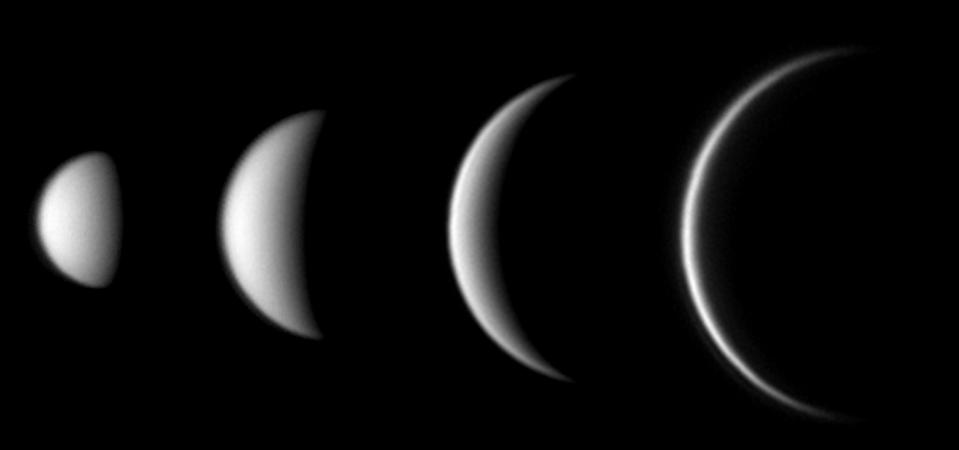That bright “Evening Star” visible in the west each night since January has vanished. Venus has been a staple of the post-sunset night sky all year, but today it finally disappears into the glare of the sun.
It doesn’t transit the sun today—as last happened in 2012—instead creeping about 8º south of the sun, but for weeks it’s been retreating into a crescent shape. Today it will be a mere 1% illuminated crescent planet from the vantage point of the Earth, though in practical terms impossible to observe.
How can this be? This does not happen to Jupiter, Saturn and Mars—the other three planets that can be easily and frequently seen with the naked eye—so why Venus? Actually, Venus is not alone in display moon-like phases.
Close to the Sun
The answer is that Venus is an inner planet—along with Mercury. Venus takes 225 days to orbit the sun while Mercury takes just 88 days. Both planets are only seen either after sunset or before sunrise because they are—from our point of view—always relatively close to the sun.
Both orbit the sun faster than Earth, so catch us up and appear to swing into the sun’s glare. As they do—something called “inferior conjunction”—they go from being visible after sunset to before sunrise.
This weekend sees Venus change from being an “Evening Star” to a “Morning Star,” periods called apparitions by astronomers. As it emerges from the sun’s glare it will be visible a couple of weeks from now in the eastern pre-dawn and reach its apparent farthest from the sun in late October.
Then it will slowly slink back into the sun’s glare while on the other side of the solar system to Earth for a “superior conjunction” in early June next year.
Eight-Year Cycle
Venus has an eight-year cycle, as seen from Earth, in which it orbits the Sun 13 times and makes eight apparitions as either the “Evening Star” or “Morning Star.”
It’s just all a matter of perspective and line of sight from Earth, our moving platform in space. After all, all Venus is doing is orbiting the sun. As it appears to get closer to the sun from our point of view it wanes to a crescent, is virtually invisible during inferior conjunction with the sun, then waxes to full again just before its superior conjunction.
The same goes for Mercury, but on a much faster timescale. However, because it’s never far from the sun from our point of view it’s much harder to observe—although this week is a good week to spot Mercury in the west after sunset.
Wishing you clear skies and wide eyes.

